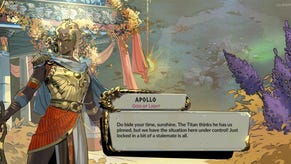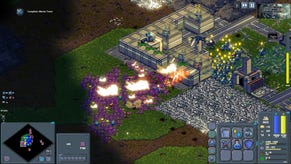Hard Choices: 8 Things You Should Know About Monitors
Heed the Lessons of Laird before buying a new screen
OK folks, we've done CPUs and graphics cards, now for my favourite subject of all, screens. I've long said a decent screen is the best investment you can make. Frankly, I've long been right. I've three 30-inchers of my own, two of which are about five years old. And with the exception of 120Hz support (see below), the game hasn't moved on dramatically. Any five-year-old CPU or GPU, by contrast, is garbage. That's the difference.
As it happens, good LCD screens have just become a lot more affordable. You'll need to check out part two for the whys and wherefores along with a tour of the best currently available options. But things change fast, so a little knowledge can go a long way. Here are the eight most important things you need to know about screens for games.
1. Panel types
This is the biggie, the issue you really need to wrap your head around. A few of the following factoids have been simplified for easier digestibility, so please don't write in with points of pedantry. The fuller, forensically accurate exposition is far too lengthy, far too dull, doesn't materially improve comprehension and definitely doesn't help with choosing a panel.
Above: 30 inches of IPS gorgeousness: My venerable Dell 3007
TN or Twisted Nematic
Right. The crystals in TN panels are fixed at one end. Got that? It means they can't move much and that explains why TN panels have historically had crappy viewing angles and dodgy colours. It also explains the poor blacks. The default position lets light through and the crystals can't shift enough to fully block the backlight. The same goes for the shonky colour fidelity. The crystals cannae move enough. Thing is, that limited movement also translates into speed, which is why TN panels have the best pixel response.
TN, the bottom line: Fast response, crap colours, leaky blacks, shitty viewing angles. Next!
VA or Vertical Alignment
VA screens come in two yummy flavours, PVA and MVA. The technicalities are super dull, so I won't bother. What you need to know is that PVA has richer colours and deeper blacks. In fact, if anything, PVA panels tend to be over saturated. Now, the default position of the crystals in a VA screen blocks light. Thus, you know why VA has such good blacks. VA also has freely moving crystals and offers more accurate colour and better viewing angles than ye olde TN. But not quite as good as IPS, more on that in a sec.
VA's big weakness is pixel response which has lead to the use of overdrive technology, which in turn brings its own problems. Bank that one, we'll be coming back to it.
VA, the bottom line: Deep and inky blacks, super saturated colours, dodgy overdrive issues
IPS or In-Plane Switching
In many ways, IPS is the daddy. It offers easily the best viewing angles and the best colours. That's because the crystals in an IPS panel can fully rotate about their axis. Hurrah. Of course, with a longer leash, those pixels take more time to move about and that means slower response.
IPS panels also have two transistors per subpixel rather than just one. That, along with those free-range crystals, explains the fab colours. But it also means less light getting through. Result: less vibrancy. IPS has also suffered from a peculiar glow effect known as, well, IPS glow, along with sparkly screen coatings.
IPS, the bottom line: Lovely colours, super viewing angles, mediocre response and brightness
PLS or Plane to Line Switching
PLS is a panel tech recently introduced by and exclusive to Samsung. From what I understand, it's meant to be the best of IPS and PVA in a single panel type. Frankly, I'm clueless as to what marks it out technically at this point and very few PLS monitors are currently available. However, I've had a close look at one of the first and you can read about it in part two.
PLS, the bottom line: The best of IPS and PVA in a new panel type. Maybe.
Overall, panel types are converging. TN colours, contrast and viewing angles are improving, IPS response is getting better. The big question is which panel type is best for gaming? TN is clearly the bomb if maximum response is your bag. Personally, I favour IPS. It's not quite as quick as TN, but it's better in every other regard.
2. Aspect ratio and resolution
Let's be absolutely clear about this, 16:9 aspect ratio PC monitors only exist because it fractionally improves yields for fabs banging out the substrates which in turn form the basis of LCD panels. It's just a convenient marketing pitch that it coincides with so-called full-HD 1080p resolution. In truth, there's not much advantage for the PC, whether in-game or not, of 16:9. It basically boils down to 1,920 x 1,080 pixels for 16:9 and 1,920 x 1,200 for 16:10.
The same goes for larger 27 and 30-inch panels. Personally, I much prefer 2,560 x 1,600 to 2,560 x 1,440, the latter feeling surprisingly cramped by comparison. Yes, really. Problem is, 16:10 panels are now very rare and usually very expensive. They're often double the price of their 16:9 brethren. That's a lot to pay for those extra 120 vertical pixels.
3. Input lag
Fact: All LCD monitors lag, the only question is how much. The worst culprits are panels with fancy image processing gubbins, the least affected are those that just slap up the picture without pratting about. Fortunately, input lag is on the wane. It's at its absolute worst on PVA panels with overdrive (see below) and such screens have dwindled to near non-existence. For proof of just how bad it can be, check out the video below.
4. Overdrive
Ramping up the rate of pixel response has been a major challenge for monitor makers. Beyond improving the panel itself, they've taken to using a technology called overdrive. In simple terms, the idea is to shove excess voltage through the crystals to accelerate them more rapidly. Which it does. Unfortunately, it can also mean the pixels overshoot the target colour state. The result can be all sorts of horrid and unwanted image artefacts including inverse ghosting (check out the video below). Overdrive implementations vary, so it's a case of suck it and see.
5. LED backlights
So, until OLED or some similar technology comes along, we're stuck shining lights through LCD pixel grids. Until recently, it was CCFL or nothing. These days, nearly all screens are LED backlit. In reality, most are cheapo white LEDs rather than expensive and far superior RGB LEDs. Still, even white LEDs last longer, use less power and produce marginally better light than the equivalent CCFL backlights. So, yes, LED is a “good” thing.
6. Colour depth and dithering
The key metric here is bits per channel. Proper pro displays need at least 8 bits per channel, which is why 6-bit-only TN panels are out. For gaming, I'm not so sure 8- and 10-bit panels are critical. Yes, 6-bit displays end up using dithering (that's bouncing a pixel rapidly between two colour states to mimic a third). I get very upset by bad dithering (visible as fizzing pixels), but done well it's pretty much invisible to the end user. It's worth noting that lots of the latest budget-priced IPS screens are in fact 6-bit, where IPS has traditionally been 8 and 10-bit.
Above: If your panel isn't true 8-bit or beyond, it needs dithering to draw lots of colours. That can lead to speckliness and banding. (image courtesy of http://www.lagom.nl )
7. Image processing
A popular ruse is to bang out cheap TN panels and fudge the awful inherent performance with image processing tech. That includes tweaks like dynamic contrast and fancy colour modes, including modes specifically for gaming. The main upside here is that it gives monitor makers the ability to claim spectacular performance figures. Anything over 3,000:1 for contrast, for instance, will be dynamic and therefore faked.
Anyway, the take-home message here is really simple. Don't be seduced, such technology is almost always worthless. Much more important is to have a good underlying panel and backlight and sod the extras.
8. 3D technology and refresh rates
What you make of technology like NVIDIA's 3D Vision is pointedly personal. I confess, the latest second-gen 3D Vision with Lightboost is pretty impressive. But only for about three minutes. Then my eyes start bleeding and my brain begins to melt. Well, that's what it feels like.
Still, what I can say with certainly is that active shutter tech like 3D Vision is far superior to the alternative, which is alternate-line polarised technology. I can't be arsed with the specifics, but the problem boils down to the fact that polarised 3D screens effectively operate in half resolution in 3D mode. And it looks pony.
Above: How NVIDIA imagines 3D Vision. The reality will give you a headache.
One further upside to active shutter screens is the need for double refresh rates. Now, science will tell you that 60Hz saturates the human eye and brain. But I'm here to tell you that 120Hz looks absolutely fucking fabulous to the extent that I couldn't quite believe it at first. Everything from gaming to simple window jostling on the desktop is just so much smoother at 120Hz. This presents a bit of a quandary, since 120Hz monitors are currently all TN. You can't have 120Hz IPS. Bummer. Anyway, let's recap.
With all that in mind, we're just left with the minor matter of which screens you should actually be buying. Guess what? That's what part two is all about. Be back here for that tomorrow.














